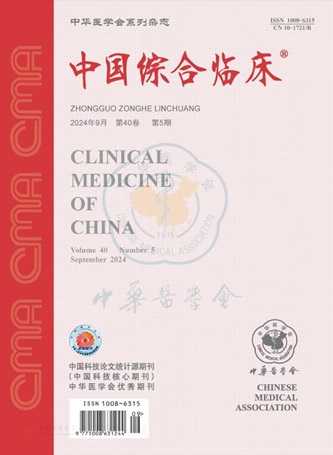神经内镜或显微经蝶入路治疗不同级别垂体瘤的疗效分析及减少术后常见并发症的措施
引用次数: 0
摘要
目的探讨内镜辅助或显微镜下经蝶窦手术治疗不同级别侵袭性垂体瘤的临床效果及减少并发症的措施。方法选择2016年1月至2019年6月河北省唐山市人民医院神经外科收治的87例垂体瘤患者作为研究对象进行回顾性分析。其中,内镜组42例,内镜组45例。比较两种不同手术方法的相关指标和临床效果,分析减少术后常见并发症的治疗策略。结果内镜组术中出血量、手术时间和住院时间均明显少于或缩短显微镜组(术中出血体积:(66.19±9.55)ml和(79.78±11.68)ml;手术时间:(93.93±9.53)min和(103.33±9.23)min;住院时间:(7.71±1.53)d和(10.16±1.33)d)。差异有统计学意义(T值分别为5.92、4.67、7.94,均P<0.01),两组比较无统计学意义(P=0.577),内镜组脑脊液漏2例(4.8%),显微镜组脑脊液漏12例(26.7%)。两组比较差异有统计学意义(χ2=5.67,P<0.05),其中内镜组尿崩症7例(16.7%),显微镜组22例(48.9%)。两组比较有统计学意义(χ2=5.19,P<0.05)。患者恢复迅速,并发症较少,住院时间短。关键词:神经内窥镜检查;显微镜;垂体瘤;并发症本文章由计算机程序翻译,如有差异,请以英文原文为准。
Analysis of neuroendoscopic or microscopic transsphenoidal approach in the treatment of pituitary tumors of different grades and the measures to reduce the common postoperative complications
Objective
To explore the clinical effect of endoscopic assisted or microscopical transsphenoidal surgery in the treatment of different grades of invasive pituitary tumors and the measures to reduce complications.
Methods
From January 2016 to June 2019, 87 patients with pituitary tumor admitted to the neurosurgery of Tangshan People′s Hospital of Hebei Province were selected as the study objects for retrospective analysis. Among them, 42 patients were included in the endoscopic group and 45 patients were included in the endoscopic group. To compare the related indexes and clinical effects of two different surgical methods, and to analyze the treatment strategies to reduce the common postoperative complications.
Results
The amount of intraoperative bleeding, the time needed for operation and the hospital stay of patients in endoscopic group were significantly less or shorter than those in microscopical group(intraoperative bleeding volume: (66.19±9.55) ml and (79.78±11.68) ml; operation time: (93.93±9.53) min and (103.33±9.23) min; hospitalization time: (7.71±1.53) d and (10.16±1.33) d). The difference was statistically significant (T values were 5.92, 4.67, 7.94, all P< 0.01). There was no significant difference between the two groups (P= 0.577). There were 2 cases (4.8%) of cerebrospinal fluid leakage in endoscopic group and 12 cases (26.7%) in microscopical group. The difference between the two groups was statistically significant(χ2=5.67, P< 0.05). There were 7 cases (16.7%) of diabetes insipidus in endoscopic group and 22 cases (48.9%) in microscopical group. The difference between the two groups was statistically significant (χ2=5.19, P< 0.05).
Conclusion
The curative effect of endoscopic transsphenoidal resection of pituitary tumor is similar to that of microscopical resection of pituitary tumor. The patients recover quickly, have fewer complications, and have a short hospital stay.
Key words:
Neuroendoscopy; Microscope; Pituitary tumor; Complication
求助全文
通过发布文献求助,成功后即可免费获取论文全文。
去求助
来源期刊
CiteScore
0.10
自引率
0.00%
发文量
16855
期刊介绍:
Clinical Medicine of China is an academic journal organized by the Chinese Medical Association (CMA), which mainly publishes original research papers, reviews and commentaries in the field.
Clinical Medicine of China is a source journal of Peking University (2000 and 2004 editions), a core journal of Chinese science and technology, an academic journal of RCCSE China Core (Extended Edition), and has been published in Chemical Abstracts of the United States (CA), Abstracts Journal of Russia (AJ), Chinese Core Journals (Selection) Database, Chinese Science and Technology Materials Directory, Wanfang Database, China Academic Journal Database, JST Japan Science and Technology Agency Database (Japanese) (2018) and other databases.

 求助内容:
求助内容: 应助结果提醒方式:
应助结果提醒方式:


